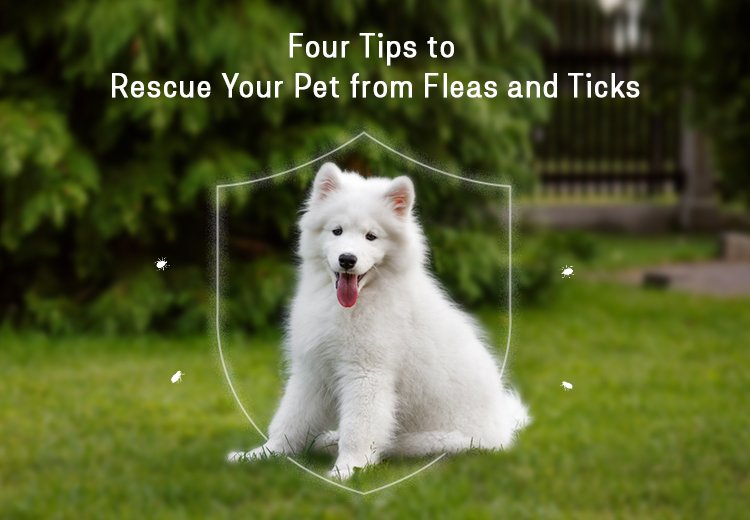Oct 29, 2021

Halloween time may be amusing time for each you and your pets, however you will additionally need to devise beforehand and take a few protection precautions. Applying flea/tick preventive treatment is essential in protecting your pet from infections such as Lyme disease and heartworm, as well as preventing a terrible flea infestation. However, deciding what to use for your pet can be difficult. Also, our pets don't always like having a treatment applied to them, which adds to the difficulty of the procedure. Don't be concerned. Follow the below tips from this blog, you'll be a flea and tick prevention expert in no time, and your pet will definitely thank you!
The first line of defense is to keep fleas and ticks from making a home on your property.
If you have a yard, this entails keeping your grass cut and your bushes trimmed back. Because fleas and ticks have fewer places to hide, this simple landscape change has the reverse effect of curb appeal.
Next, keep feral dogs and wildlife out of your yard so they don't bring fleas with them. The worst culprits are opossums, raccoons, and feral cats. Leave no bowls of dog or cat food outside to attract these pests.
Reduce the height of any trees and plants that could allow wild animals to enter your attic. Any entrances to crawl areas, garages, sheds, or beneath decks where wild animals or stray dogs or cats could nest should be sealed.
Yard flea treatments or Flea sprays are also available at your local hardware store or online at a discount on OurPetWarehouse.
Spot-on flea and tick treatments are popular among pet owners. Run a flea comb or brush through your pet's coat before bringing it inside to reduce the quantity of fleas it carries.
Do you have a pet with long hair? Pests can hide more easily there. Consider shaving your pet for the summer to make it simpler to identify concerns.
The presence of fleas and ticks in your home does not imply that it is filthy. However, if you pay close attention to specific locations, you can make pests less welcome. Immature flea tree stages (flea eggs, larvae, and pupae) are frequently found in carpets or throw rugs. Vacuum at least once a week, and more frequently if you notice fleas.
When vacuuming, don't just focus on the centre of the room. Fleas avoid high-traffic areas, so look for them in baseboards, under furniture, beneath cushions, and any other places where your pets sleep or visit frequently. To destroy emerging fleas, change vacuum bags frequently or place a flea collar in the bag. If your pet rides in your car, vacuum it as well.
To kill flea eggs and larvae, wash your pet's bedding, crate, and toys in hot water once a week.
Infestations in your home are far less common today, thanks to excellent flea and tick control solutions that you can administer to your dogs.
If fleas do get into your home, take action to get rid of them and keep them away. First, thoroughly vacuum your carpets. After vacuuming, throw away the bag right away since eggs and larvae will continue to develop in it. The carpet should then be shampooed or steam-cleaned to eradicate any remaining fleas and larvae. When using an insecticide in your home, washing the carpets first causes the substance to go deeper into the carpet.
To keep infestations at bay, consider Nexgard for Dogs and Frontline Plus for Cats, which are the most highly recommended potent flea and tick repellents. NexGard eliminates fleas and ticks quickly and continuously throughout the month, and it is licensed to prevent Lyme disease infections by killing black-legged ticks. While the other one Frontline Plus kills fleas and ticks on your cat and is a sophisticated formula that also prevents flea eggs from hatching and infesting your home, preventing fleas from infesting your pet and your home.